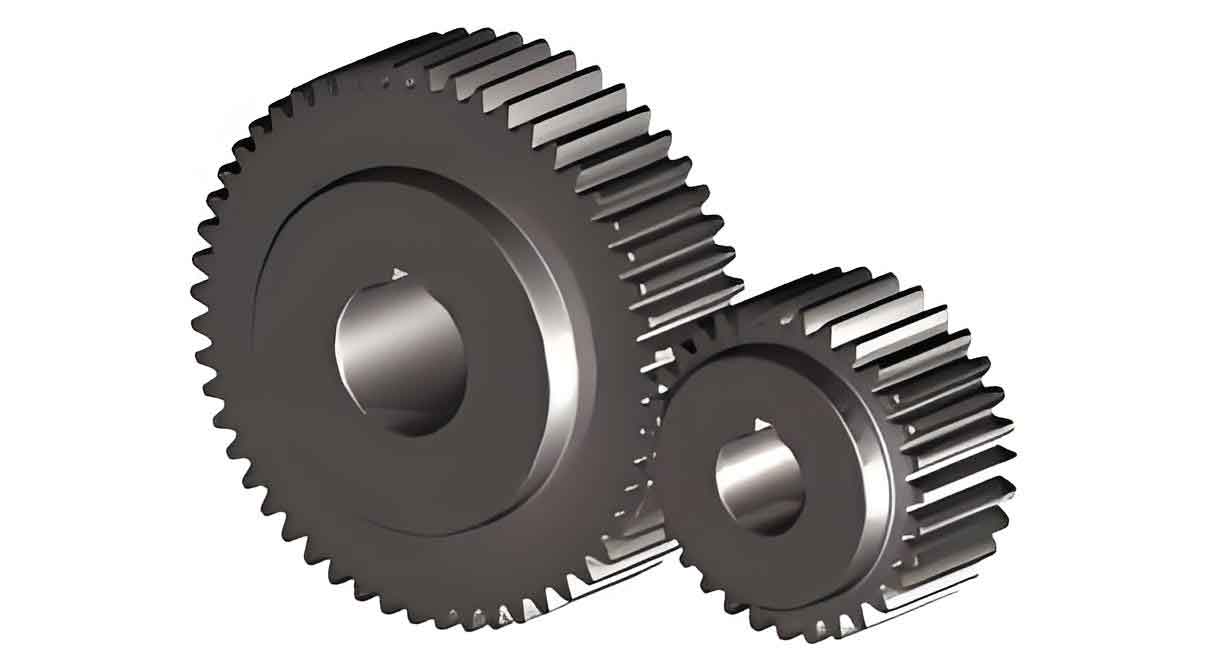Abstract:
This paper focuses on the dynamic analysis of high contact ratio spur gear considering surface wear. Based on the Archard wear model, the tooth surface wear of spur gear is calculated. Using the energy method, the comprehensive mesh stiffness of the gear pair is obtained and expressed as a segmentation function. Combined with a single-degree-of-freedom gear dynamics model, the impact of tooth surface wear on gear dynamics is investigated. The results reveal that tooth surface wear significantly influences the dynamic response of high contact ratio spur gear under light load conditions, with spur gear system undergoing complex changes between quasi-periodic and chaotic motions as wear increases. Under heavy load conditions, however, the influence of tooth surface wear on dynamic response is minimal, and spur gear system maintains periodic motion for an extended period.

1. Introduction
High contact ratio spur gear, characterized by a contact ratio greater than 2, are widely used in the machinery industry due to their excellent dynamic characteristics and low noise generation. Therefore, it is essential to calculate the total mesh stiffness of high contact ratio gears and analyze their dynamic characteristics considering tooth surface wear.
The following table summarizes the key research in this field:
| Reference | Focus | Methodology |
|---|---|---|
| [1] | Mesh stiffness calculation | Based on machining model |
| [2] | Mesh stiffness evaluation | Considering surface defects |
| [3] | Influence of backlash | On mesh stiffness and dynamics |
| [4] | Mesh stiffness calculation | Considering wear (spur gear) |
| [5] | Wear calculation and testing | Methods and suppression techniques |
| [6] | Wear calculation and analysis | Numerical methods (spur gear) |
| [7] | Influence of tooth surface wear | On contact load (spur gear) |
| [8] | Dynamic wear characteristic | Considering dynamic loads and wear coefficients |
2. Gear System Dynamics Model
2.1 Dynamics Model Construction
The single-degree-of-freedom dynamic differential equation for spur gear system can be expressed as:
Where:
- e_m is the equivalent mass of the system.
- c is the damping coefficient.
- k_t(t) is the time-varying mesh stiffness.
- m_F is the equivalent external excitation (ignoring torque fluctuations).
- h_f(t) is the internal excitation with amplitude h and frequency ω_h.
- f_x is the backlash function.
2.2 Dimensionless Form of the Equation
The dimensionless form of Equation (1) is obtained by normalizing the variables.
3. Introduction of Wear Characteristics
3.1 Single-Tooth Time-Varying Mesh Stiffness Calculation
The geometric model of the high contact ratio spur gear processed by hob.
The time-varying mesh stiffness is calculated using the energy method, considering bending stiffness k_b, shear stiffness k_s, and axial stiffness k_a.
3.2 Wear Calculation
The tooth surface wear is calculated based on the Archard wear model. The relationship between tooth surface wear and pressure angle.
3.3 Total Mesh Stiffness Considering Wear
The total mesh stiffness is obtained by summing the single-tooth time-varying mesh stiffness, considering the influence of wear. The variation of total mesh stiffness under different wear conditions.
4. Dynamic Analysis
The dynamic characteristics of spur gear system are analyzed by solving the dimensionless differential equation, considering the total mesh stiffness affected by wear.
4.1 Light Load Condition
- No Wear: The system exhibits periodic motion.
- Wear Present: The system undergoes complex changes between quasi-periodic and chaotic motions as wear increases.
The dynamic characteristics under different wear conditions.
4.2 Heavy Load Condition
Under heavy load conditions, the influence of tooth surface wear on the dynamic characteristics is minimal. The system maintains periodic motion regardless of wear.
5. Conclusion
This paper presents a dynamic analysis of high contact ratio spur gear considering tooth surface wear. The total mesh stiffness is calculated using the energy method combined with the Archard wear model. The results indicate that under light load conditions, tooth surface wear significantly influences the dynamic characteristics of high contact ratio spur gear, leading to complex changes between quasi-periodic and chaotic motions. Under heavy load conditions, however, the influence of wear is minimal, and the system maintains periodic motion.
